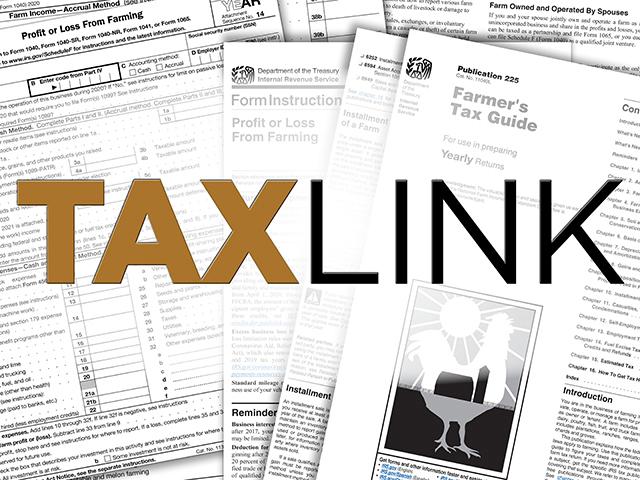Taxlink
Benefits of Paying Self-Employment Tax
Most farmers don't want to show self-employment (SE) income. After all, why pay the SE tax? To avoid it, they set up complex structures to reduce/shift income. But is paying an SE tax bad? Are there any benefits to showing SE income?
Before discussing why some SE income is good, let's talk about the consequences of avoiding the SE tax. First, when you retire, you will receive little or no Social Security benefits. In addition, you probably didn't pay in enough quarters for disability in case of an accident.
Besides losing benefits, trying to avoid tax can result in negative capital accounts, excessive debt and unproductive (or underproductive) assets. Spending $1 to save 30 cents on something you don't need is never advisable. The IRS allows you to play these games because usually one of two things happens, both of which benefit the IRS. The first one is you can't transfer your farm to your kids without paying significant taxes. The second is when you wind down and sell, you will be paying much higher tax rates than if you just paid a little tax each year.
Now that you have decided to have some positive SE income, what should you know about Social Security and Medicare? First, Social Security is progressive. That means the more SE tax you pay, the lower the rate of return is for the "investment" in Social Security. For example, lower earners (averaging $25,000 of SE income per year) might receive $12,000 a year (replacing about half their income). But higher earners might receive $36,000 a year (replacing less than 30% of their income). This is why many middle or higher earners have to use 401(k)s or IRAs to supplement Social Security.
P[L1] D[0x0] M[300x250] OOP[F] ADUNIT[] T[]
Because Social Security benefits are not substantial to the amount of tax you paid to receive them, the key is to show enough SE income to qualify but not so much that you go too far into the second bend point. Also, keep in mind you will need 40 credits to be eligible for Social Security. So, you will need to have SE income for at least 10 years (can be nonconsecutive).
In my opinion, Social Security isn't the most important benefit. It's Social Security Disability Insurance (SSDI). To qualify for SSDI, you need to have earned 20 work credits for the past 40 quarters. Simply put, work five out of the 10-year period prior to the disability. This is subject to the recent work test and the duration of work test, which may reduce this requirement.
For reference, you receive one work credit for every $1,640 of SE earnings.
According to USDA, about 19% of farmers become disabled. Most farmers buy farm/liability/crop insurance, but rarely have I seen disability insurance. In my opinion, it's worth paying under $1,000 in tax per year to qualify for SSDI. And, if you meet the requirements for SSDI, you may qualify to get Medicare Part A for free.
Now that you have decided you want to pay into Social Security/Medicare but are not sure you like the idea of showing SE income, there is an option available to farmers. If a farmer has gross farm income under $9,840 or farm profits under $7,103, the farmer can elect two-thirds gross farm income (up to $6,560) as net earnings.
As you can see, paying a minimal amount of SE tax isn't bad, especially if you are a younger farmer without disability insurance.
**
DTN Tax Columnist Rod Mauszycki, J.D., MBT, is a tax principal with CLA (CliftonLarsonAllen) in Minneapolis, Minnesota. Read Rod's "Ask the Taxman" column at https://www.dtnpf.com/…. You may email Rod at taxman@dtn.com.
(c) Copyright 2024 DTN, LLC. All rights reserved.



